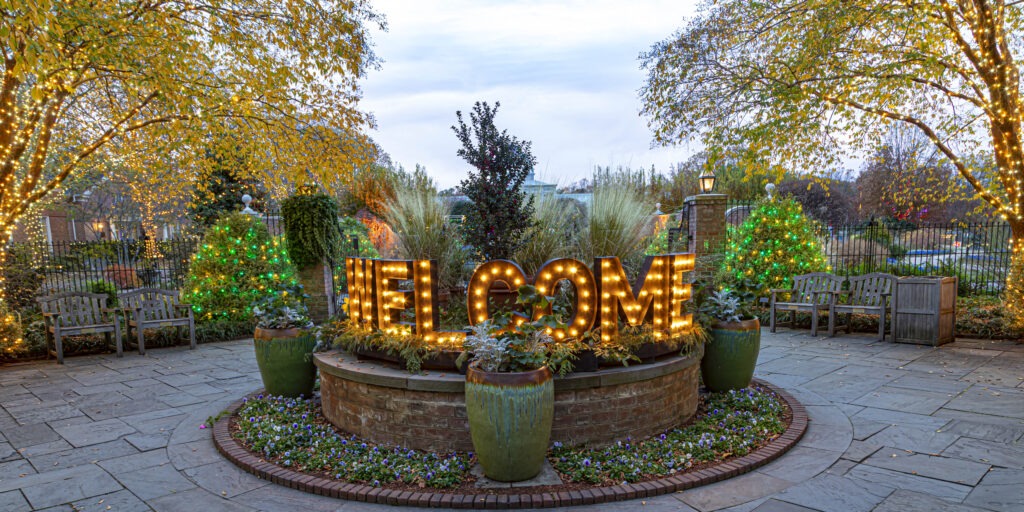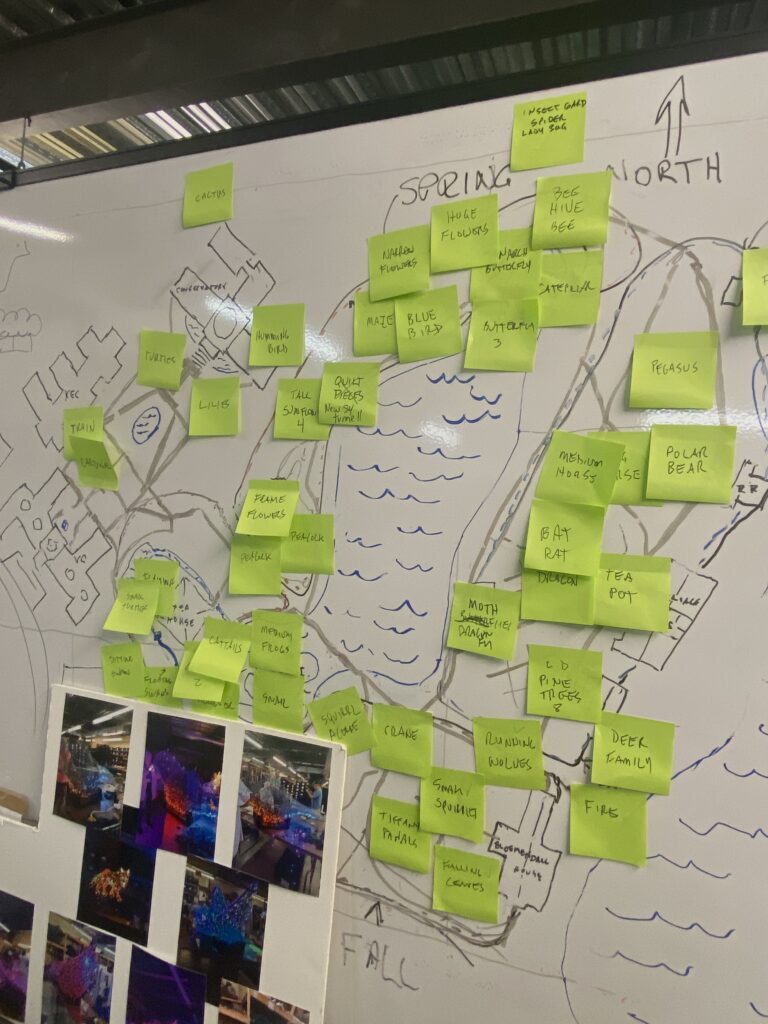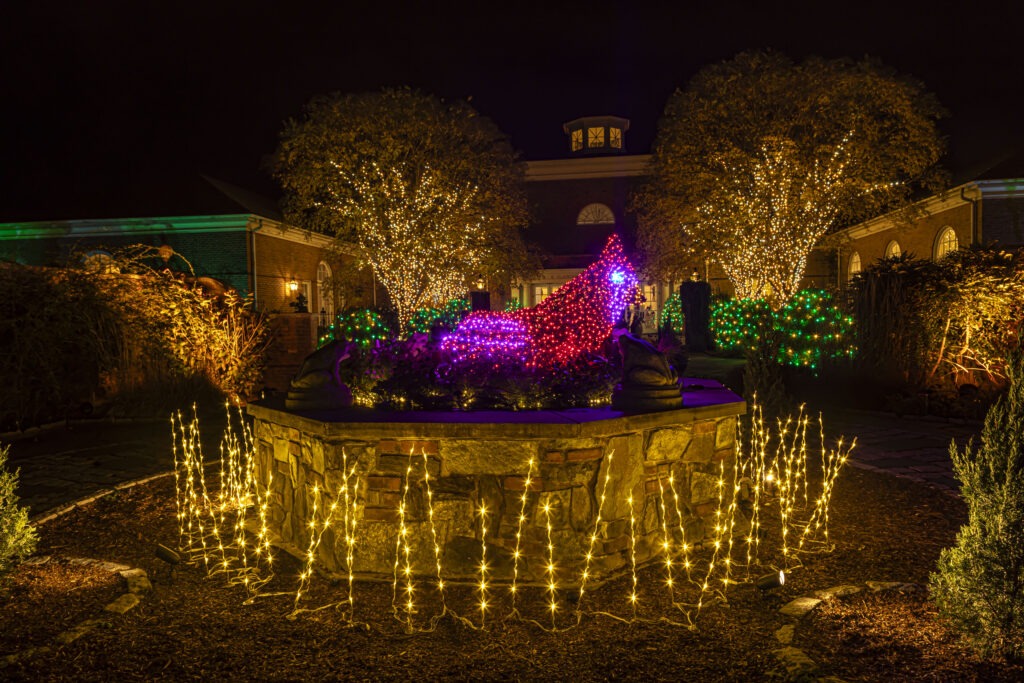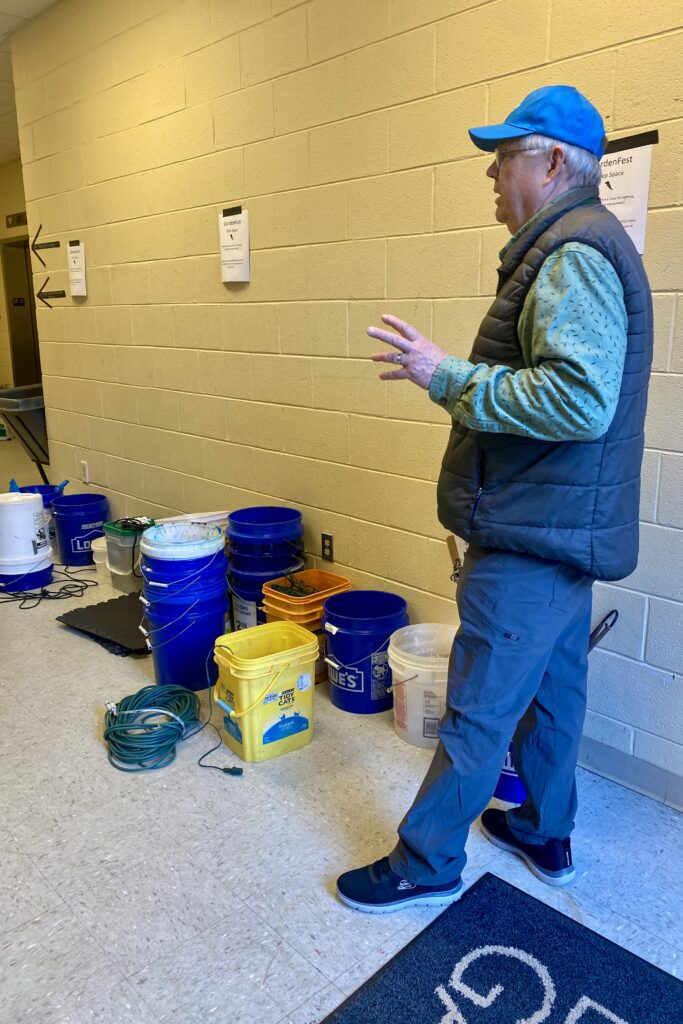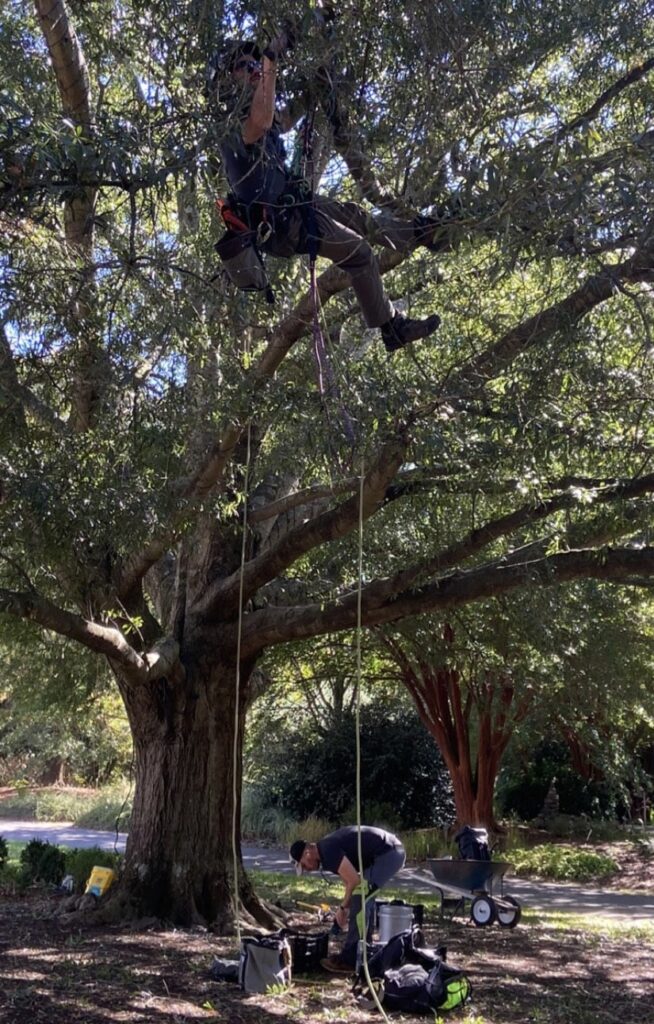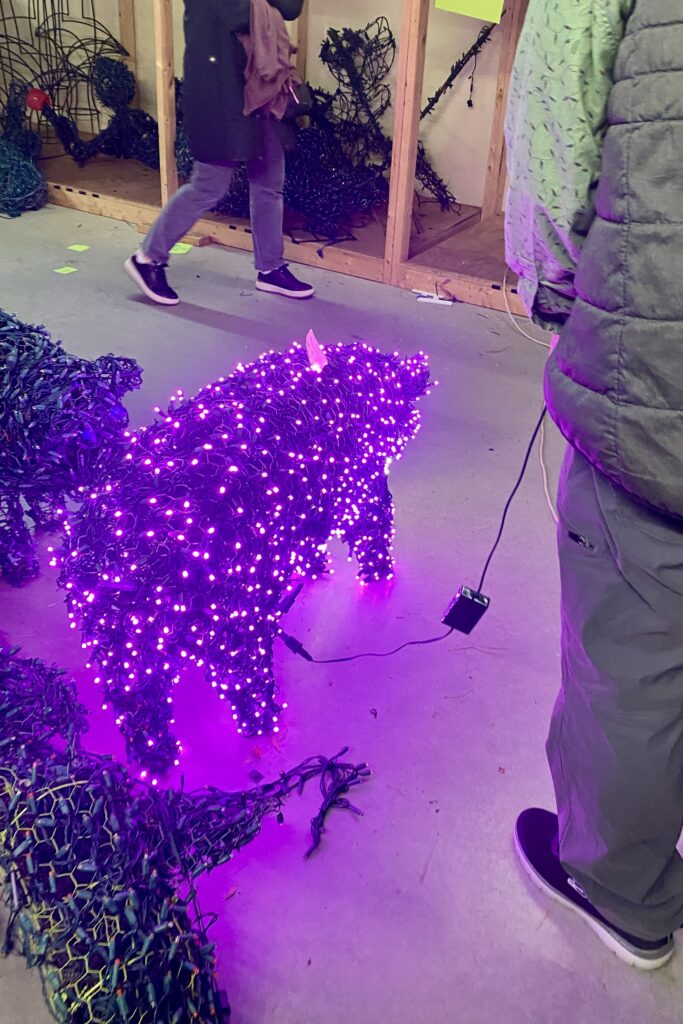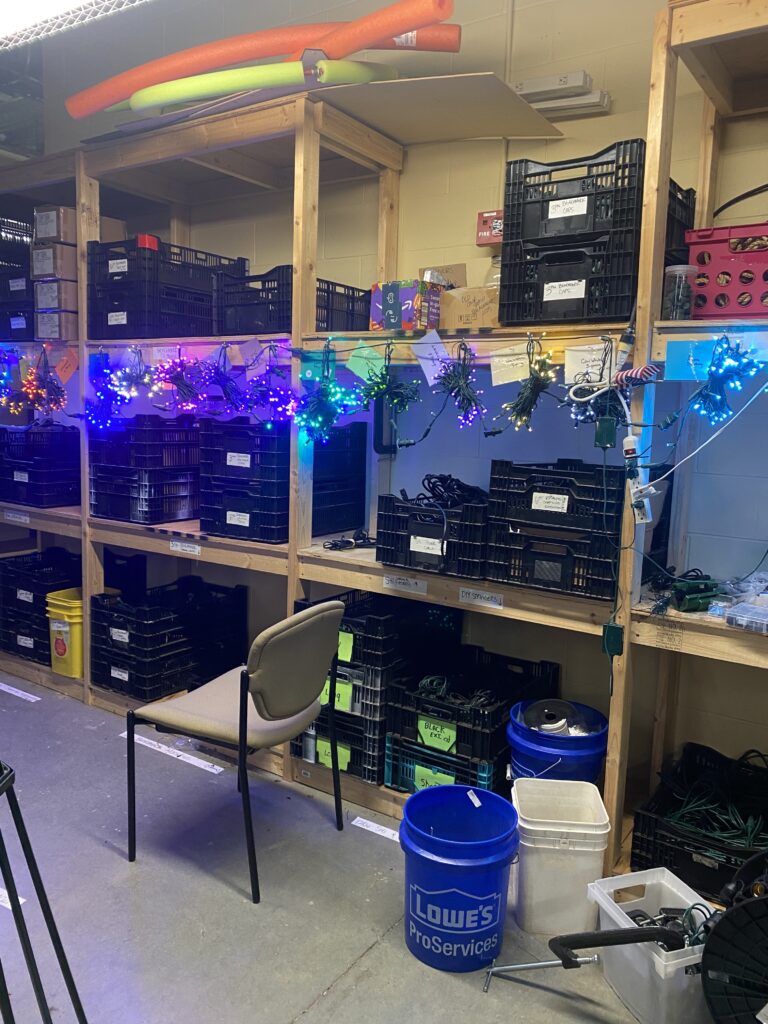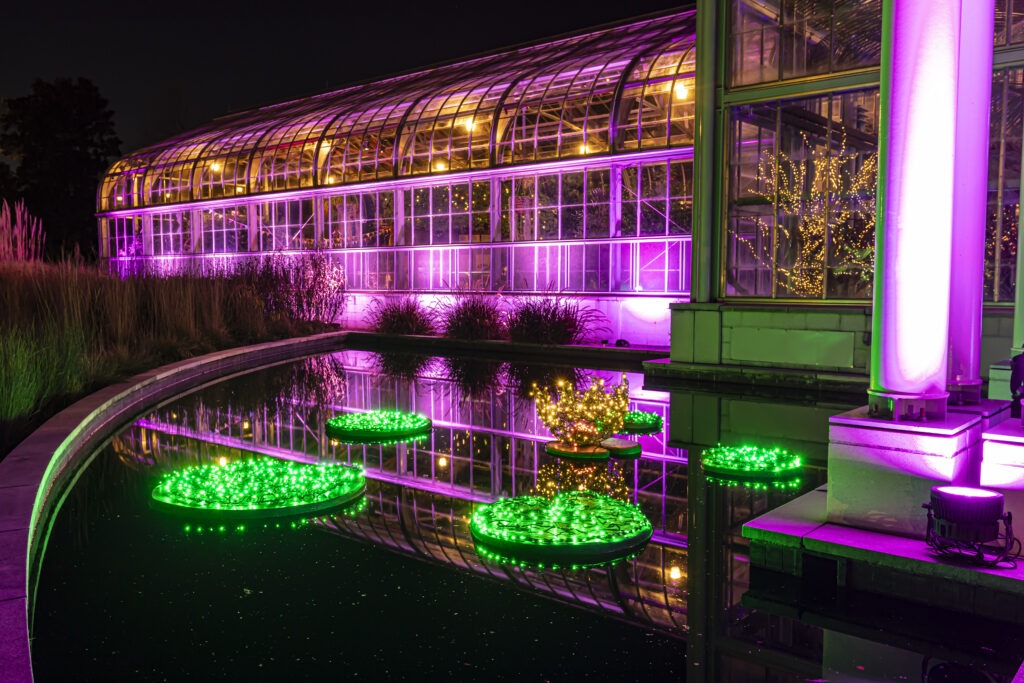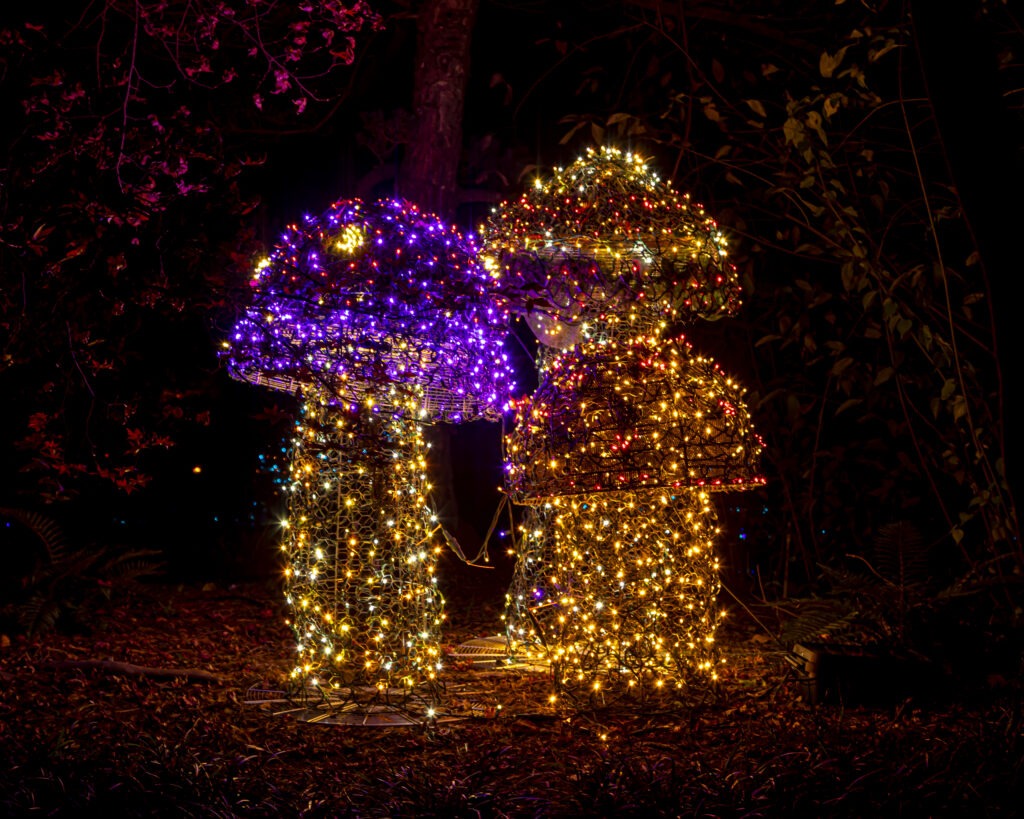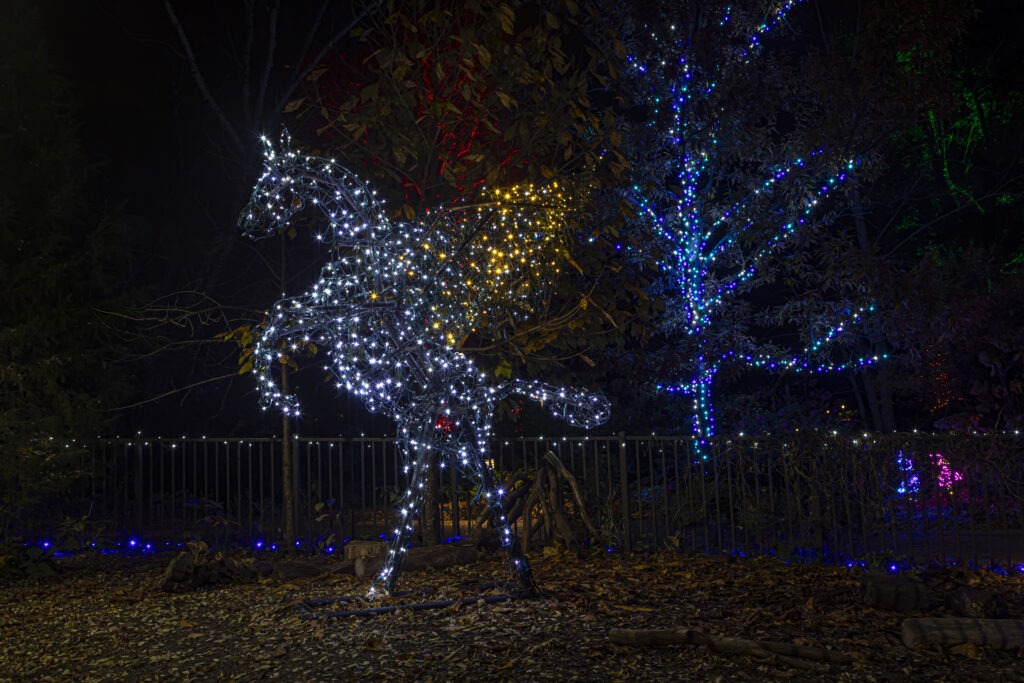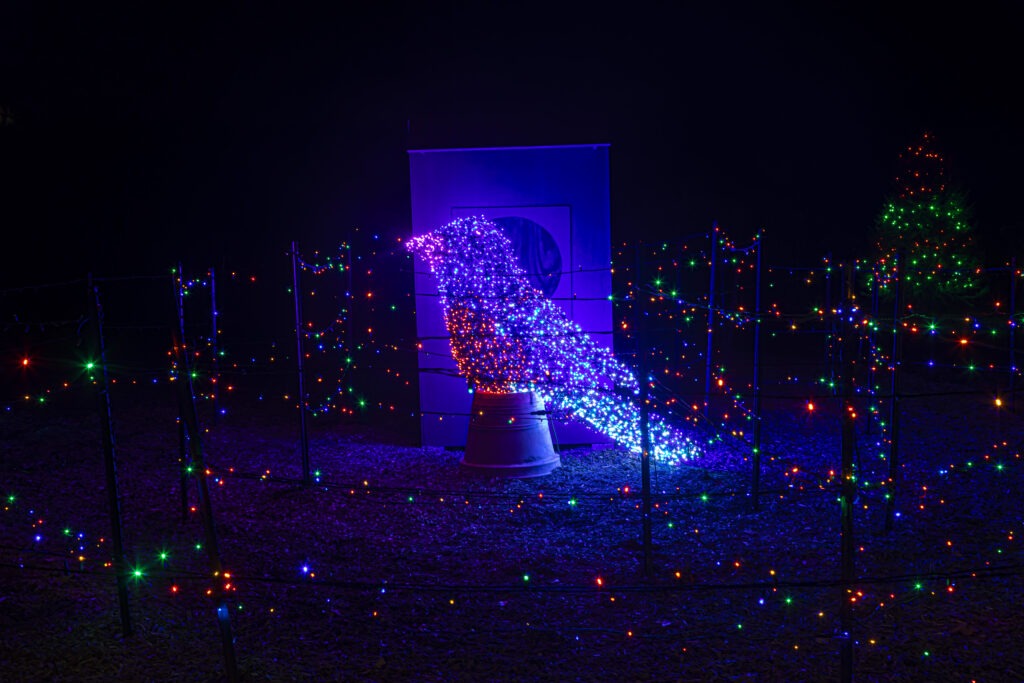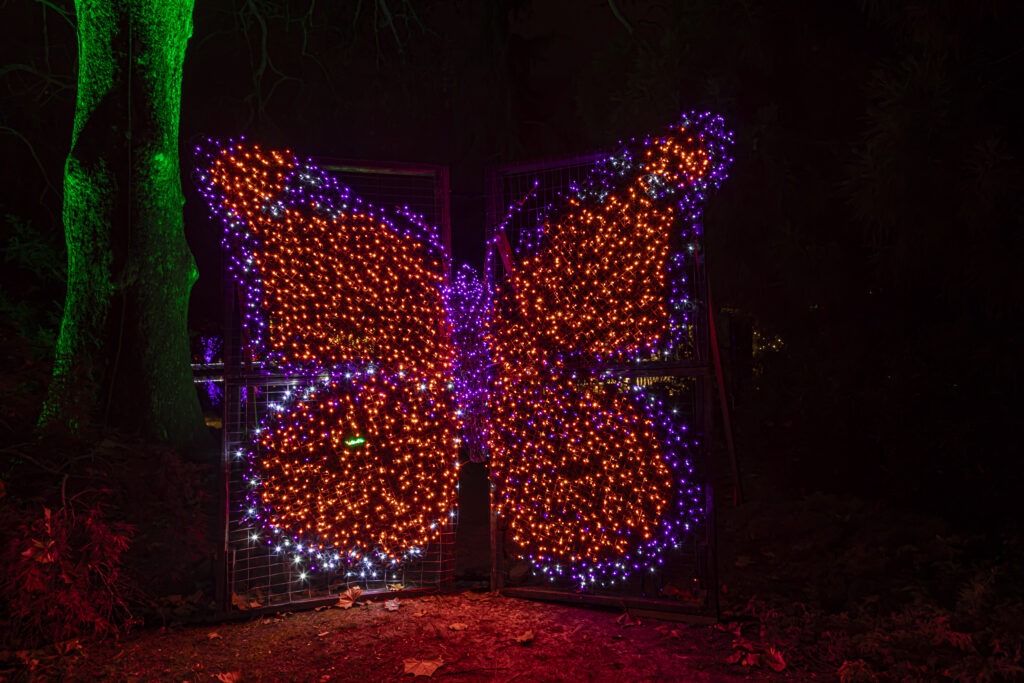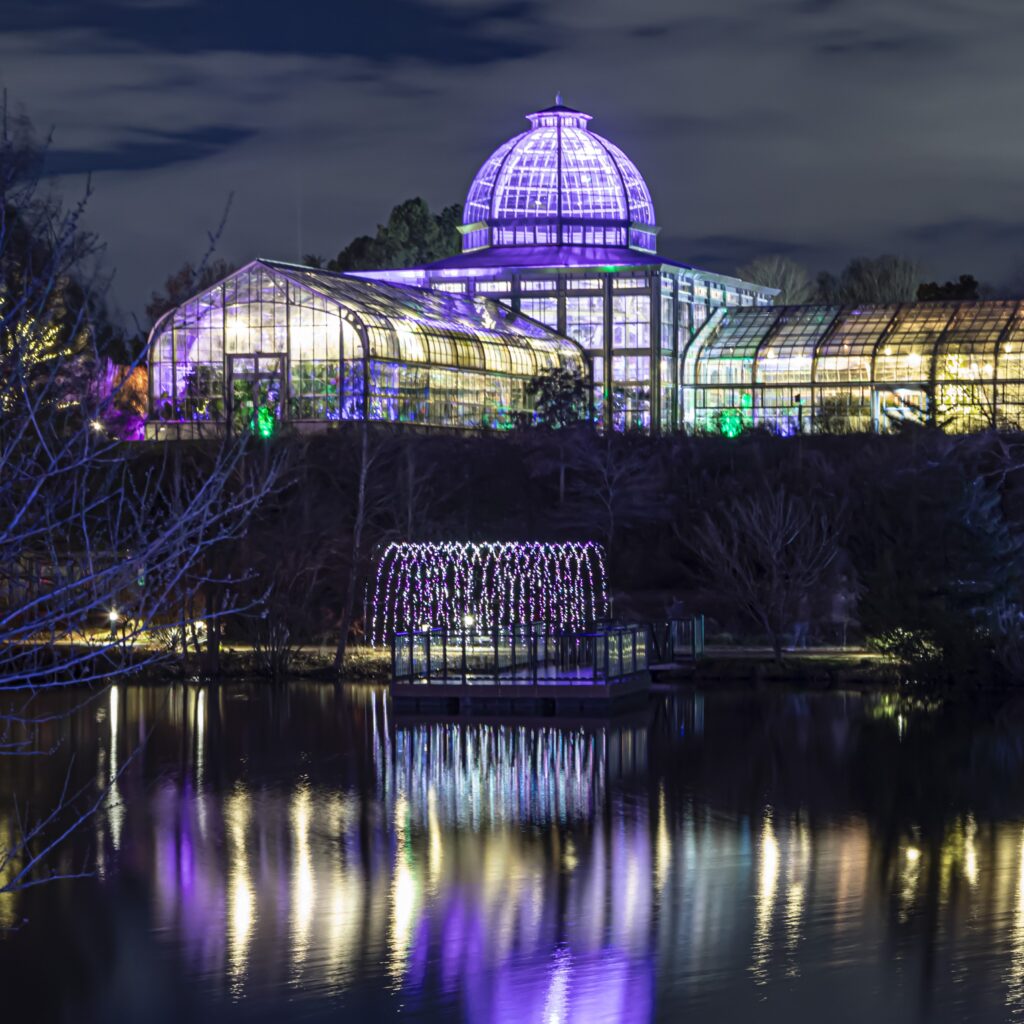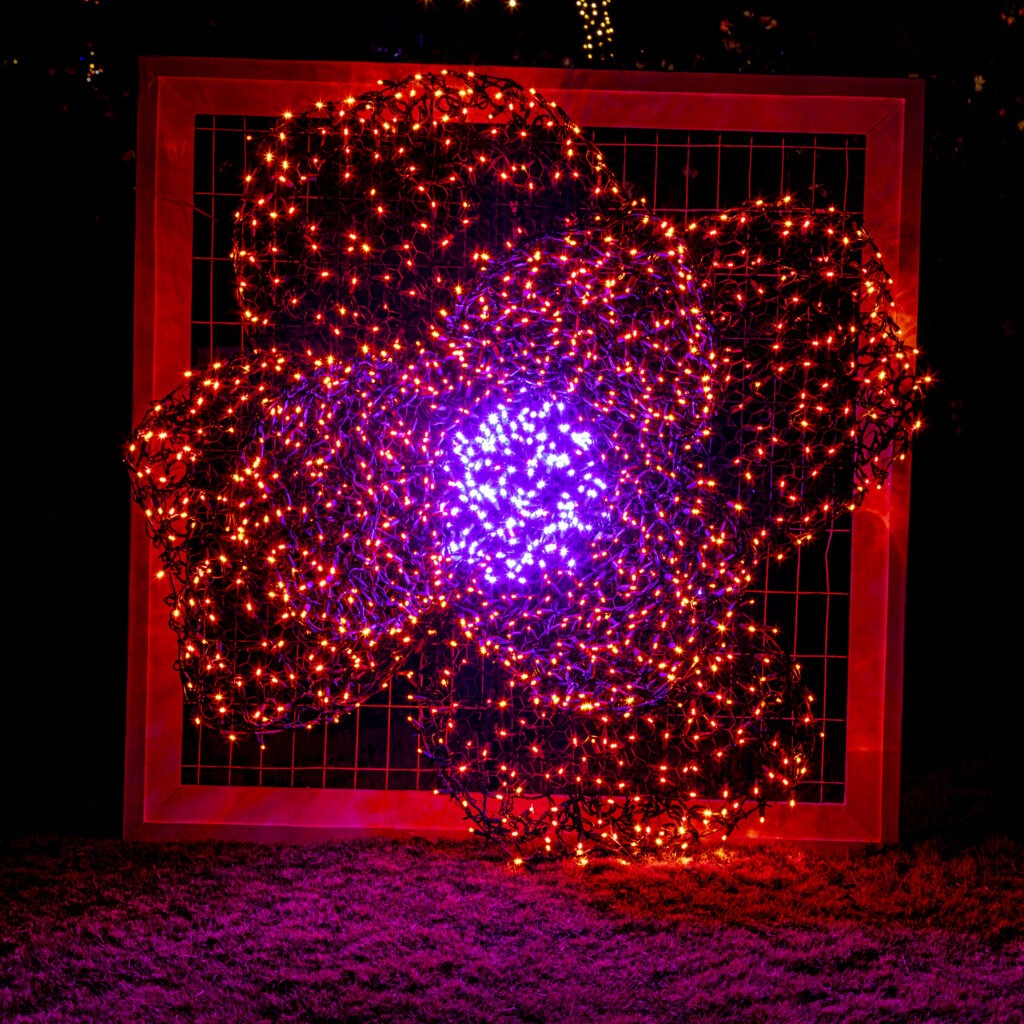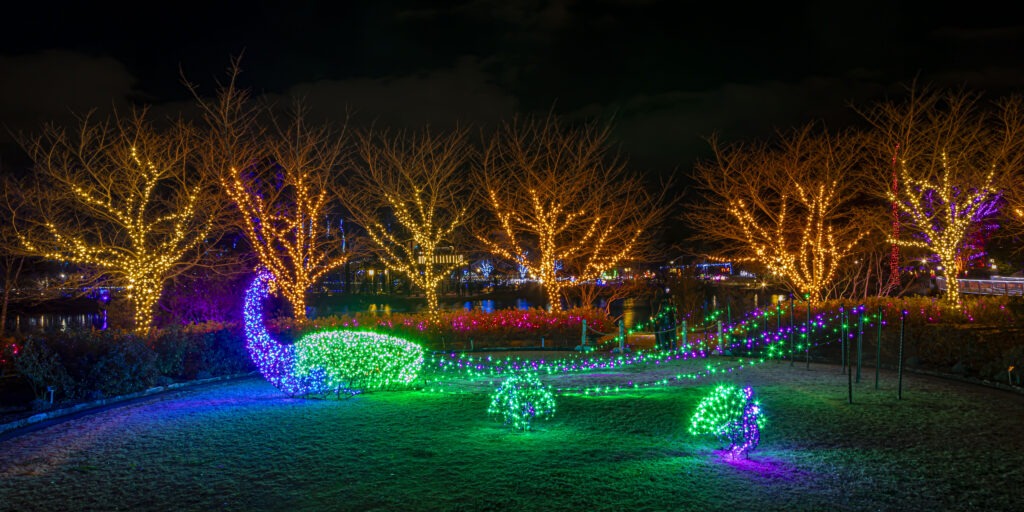Come With Me to the GardenFest Behind-the-Scenes Tour 2023
While Dominion Energy GardenFest of Lights has concluded its 2023-2024 season, throughout the weeks of the event I noticed that guests often asked about what goes into creating the show. I attended many times as a child in the early 2000s but did not realize just how much manpower goes into creating this large event until I started working at the Garden in 2023. In December, I had an opportunity I couldn’t pass up –going on the GardenFest of Lights Behind-the-Scenes Tour led by Garden Guide Bob Lincoln. Bob has been a volunteer for over a decade. He had been making holiday displays in his front yard for years before joining the GardenFest team. Since retiring in 2016, he has been making light forms year-round, creating all kinds of shapes and critters for the Garden. Bob took us on an unforgettable tour through the Garden that revealed how light forms are created, the magic that happens in the basement of the Kelley Education Center, and how each year’s theme is interpreted through its layout within the Garden.
Our first stop was in the Central Garden, where this year’s three-dimensional cardinal light form sits in a nest atop the fountain. Bob and his team of “basement buddies,” who create the light forms, make as many three-dimensional forms as possible, so guests can experience them from every angle. Bob begins the tour with some introductory stats, noting “every year, we have an inventory of around 200 small light forms and 40-50 medium-to-large sized forms. We put about 80% of them out in the Garden and make about 20% new every year because the displays and themes change from year to year. This guides our decisions on what to create.” This year’s theme is Rhythms of Nature and each Garden represents a different season, like Fall and Spring. The light forms and colors are chosen to reflect the prominent colors that surround us in each season.
We then made our way to the light prep area on the first floor of the Kelley Education Center (KEC). This is the spot where crews make sure every set of lights works properly. Bob expands on this, saying, “We start wrapping lights on trees in August. When you put those lights up, they have to work. The person placing them on the tree could be 90 feet in the air [without spikes so no trees are harmed] and if that string of lights doesn’t work, or it’s the wrong color, that’s a problem. We have to prep all of these lights and make sure all one million of them work properly.”
The staff members who design the theme of the show will decide on colors used in the gardens. This year there were lots of blue and white lights to represent winter in the Children’s Garden, plus orange and red lights for fall in Grace Arents Garden. The staff members then work with Bob’s team to see what is available in their inventory of thousands of string lights. If a crew member needs 40 strings of red lights to put on a tree, they’ll provide that estimate for Bob and his team, who prepare all 40 strings to make sure they all work properly with their string neighbors.
My tour group then went down to the basement of the Kelley Education Center, also known as the room “where the magic happens” to Bob and his basement buddies. In this room they discuss themes, create light forms, and store those from previous years. Countless crates filled with 40 string lights each fill the middle and edges of the room. As we walk further in, we come across a pig-shaped light form that Bob repaired.
Then, we see an area aptly named the “color wheel” with string lights labeled by color. All of the lights are connected to a plug so they can be turned on to make sure the right color is used. Purple and violet look practically identical when they’re not plugged in.
Bob will create shapes for the light forms using various items, typically made out of wire like tomato cages, then a group of volunteers will come in after him and put chicken wire over the shape for the lights to grab hold of. Finally, a larger group of people puts each light on –by hand– and attaches it with a zip tie. Nearly every 4-6 years, the team will change out the lights “whether it’s needed or not” because, as Bob points out, “it’s really important to us that the materials we use are reliable.” With ever-changing technology, this routine switch is especially important.
While a lot of the forms are made from scratch with fence wire and zip ties, previous theme’s forms are often recycled and reused throughout the years. “Sometimes, people will donate forms,” Bob points out as he walks to grab a llama-shaped light form that was given to the Garden. As we get to the back of the room, Bob picks up a human-shaped light form that was once used as the Pied Piper. “My team and I used him for our Stories in Lights theme in 2017,” Bob explains, “we also made mice-shaped light forms using soda bottles to put next to him. In 2018, he was transformed into Bob Ross.” To get the brown color of Ross’s afro, Bob took some warm white string lights home and colored each bulb with a brown sharpie to put onto a new afro-shaped light form. To me, that shows his dedication to his craft.
The light form that was once Bob Ross’s afro is the head of the hummingbird in the Conservatory this year, with different colored lights so that waste is reduced. The bodies of both the cardinal and hummingbird were made using fruit bowl-shaped light forms from a previous theme and tomato cages courtesy of the horticulture team. Their wings were made from airplane wing-shaped forms used in the Flight theme from a past year.
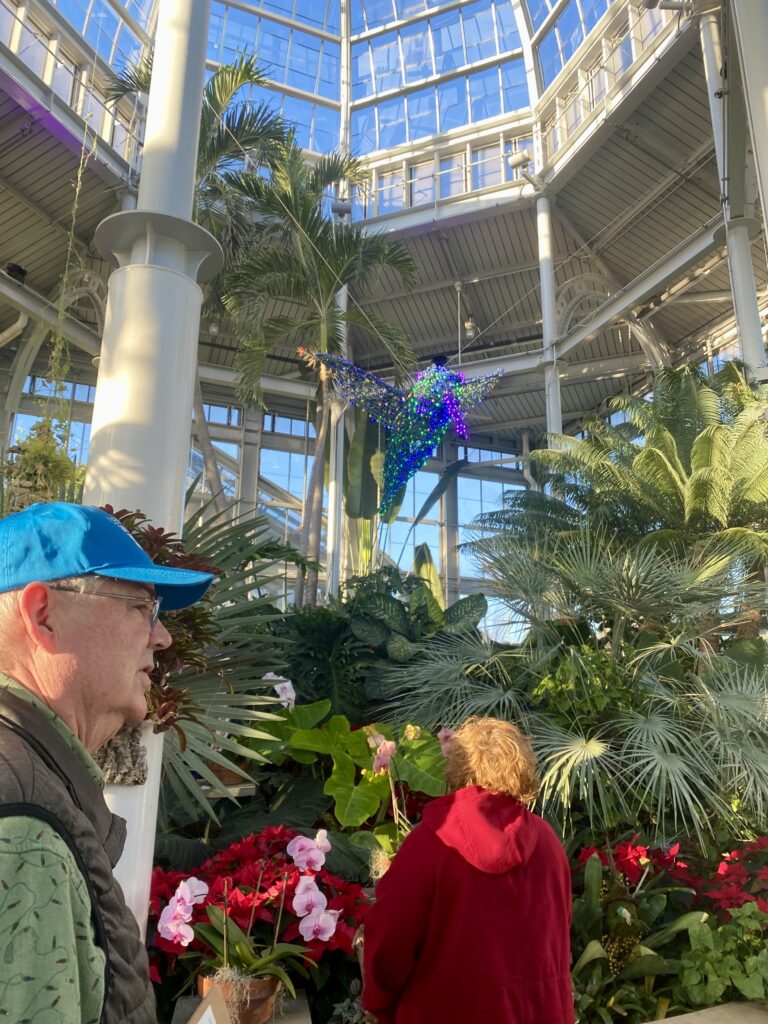
Garden Guide Bob Lincoln shows guests the hummingbird light form in the Conservatory. Photo by Meredith Orne.
As we make our way to the Conservatory, Bob points out a notable new light form in the ponds beside the entrance –lily pads and water lilies. This is an exciting development for volunteers who build the lights, given the risks it takes to put electricity through water.
After admiring the hummingbird, we head for the Children’s Garden, stopping along the way to look at mushroom light forms that are new this year in Asian Valley. The mushrooms were made using tomato cages, fan covers, and flower baskets. Then, each individual light artist got to choose a color scheme to contribute to each mushroom, which coincidentally represents the numerous varieties of mushrooms in the wild.
Continuing our loop from the Children’s Garden around Sydnor Lake, we pass the iconic 800 lb pegasus light form. “This one takes about 6 strong people to move,” Bob adds. “This one is not subject to the 4-5 year turnover. We put this one out every year. Some forms are too beloved to keep in storage.”
We then stop at the three-dimensional bluebird-shaped light form, which lives on a giant wooden birdhouse. Accuracy is essential for Bob and the basement buddies. He points out that the bird sounds guests hear this year are actual recordings of each bird’s call.
Bob also takes a moment to talk about the huge 8-foot-tall monarch beside the bluebird, which is perfect for a photo-op. He created this from four 4×4 foot wooden squares with fence wire inside. These are called “wooden quilt pieces” by the basement buddies (there’s 25 total in inventory). Last year, they used these pieces to make a tunnel. This year, they are being used for the monarch and several floral forms. Bob drew the monarch on the floor of his garage, using cardboard boxes to cut out stencils, and then painted the orange and purple colors on the wire so the light team would know what colors to use.
While walking the trail, we enter a light tunnel that was actually bought for this year’s show. “Instead of using 25-40 lb wooden quilt pieces that take all summer to put lights on, two guys put this up in two days. These lights are capable of all sorts of different colors, light patterns, and even music if needed.” Here, Bob weighs up the differences between handmade light forms and new technology. “Even though there is a nostalgic feel of being able to walk amongst the handmade three-dimensional light forms and wrapped trees, it’s pretty hard to get away from something this easy to do and has this much capability. So, we’ll have to figure out how we ease into that without becoming something that we’re not. We need to decide how we’re going to navigate that path. We haven’t gotten a new gang of younger people coming in and taking over for us basement buddies yet, but we’d love to see it happen.”
We then walked to the Cochrane Rose Garden, where we were surrounded by the poinsettia, daffodil, and poppy light forms. Bobs inside scoop on why they were picked for this year’s show: “They represent three different ways that plants can be propagated. Poppies are well known for their seeds, daffodils by their bulbs, and poinsettias mainly propagated through cuttings.”
We ended our tour at the Peacock, who makes an appearance every year at a different location. The peacock was made about 10 years ago, was re-lit in 2018, and has been a staple ever since.
This tour was an unforgettable experience for me. When I was little, all I noticed at GardenFest of Lights were pretty lights, tasty food, and paths for me to run down. I now see this childhood tradition in a completely different light and have a greater appreciation for the small team that puts their time, effort, and whole heart into the show.
